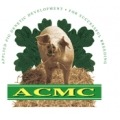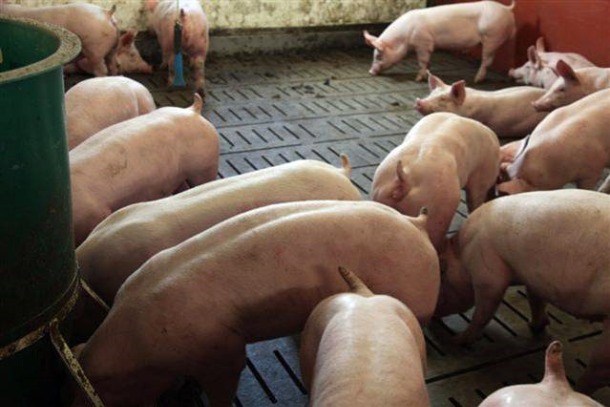 Now that many pigs are being taken to heavier weights there are further opportunities for farmers to make savings in feed costs by tailoring diets more accurately to the genetic capability of the pig, says Ed Sutcliffe, geneticist with pig-breeding company, ACMC.
Now that many pigs are being taken to heavier weights there are further opportunities for farmers to make savings in feed costs by tailoring diets more accurately to the genetic capability of the pig, says Ed Sutcliffe, geneticist with pig-breeding company, ACMC.
Results were analysed from hundreds of pigs individually tested using the company’s sophisticated FIRE (Feed Intake Recording Equipment) system on its Oakwood nucleus unit in Yorkshire. The analyses looked at how the feed intake of animals changed relative to their growth rate. They showed that moving from a single diet to three diets — designed to deliver the required nutrient intake at specific growth phases beyond 45 kg — can give savings of up to £1.98 per pig. This resulted from the ability to use lower cost diets in the later stages of finishing.
“This would be worth over £23,000 in a 500-sow herd rearing the BPEX average of 24 pigs per sow per year on an indoor unit,” said Mr Sutcliffe.

He looked at diets for three different growth periods — a grower ration between 45 kg and 60 kg, a finisher 1 ration between 60 kg and 80 kg and a finisher 2 diet between 80 kg and 100 kg liveweight. With the input from a nutritionist, diets were formulated to match the potential of the pig in each of the three growth stages, and create cost savings using the two additional diets compared with using a single diet over the whole growth period.
“If we are correctly supplying nutrients at 45 kg then, by the time the pigs are 80 kg, there is an imbalance since they are increasing their nutrient intake by 55 per cent, but their requirement for growth is only 25 per cent,” said Ed Sutcliffe. Cheaper diets with lower digestible energy and lysine can be used during the final two stages of finishing saving up to £25.00 per tonne on the cost of feed.

“The principles of feeding multiple diets through the growing and finishing stages are not new and are employed in some production systems. However, with increasing slaughter weights we should be adding further finisher diets, particularly at the latter stages where the greatest savings are to be made. With feed prices still high and representing 63 per cent of total costs of production this is a timely reminder of the value linking nutrition to the genetic potential of the pig,” commented Mr Sutcliffe.
September 27, 2013 - ACMC


